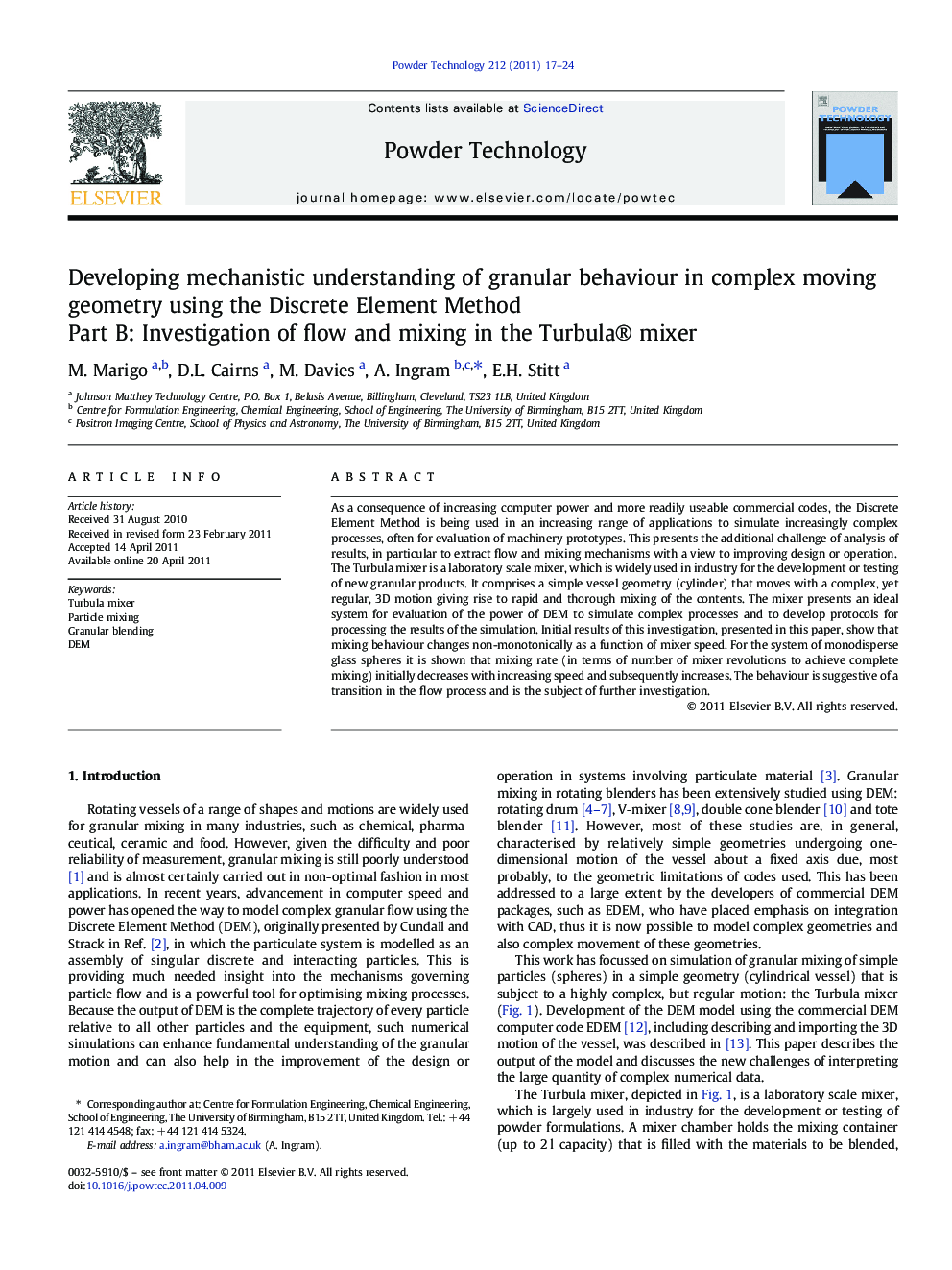| کد مقاله | کد نشریه | سال انتشار | مقاله انگلیسی | نسخه تمام متن |
|---|---|---|---|---|
| 237418 | 465707 | 2011 | 8 صفحه PDF | دانلود رایگان |

As a consequence of increasing computer power and more readily useable commercial codes, the Discrete Element Method is being used in an increasing range of applications to simulate increasingly complex processes, often for evaluation of machinery prototypes. This presents the additional challenge of analysis of results, in particular to extract flow and mixing mechanisms with a view to improving design or operation.The Turbula mixer is a laboratory scale mixer, which is widely used in industry for the development or testing of new granular products. It comprises a simple vessel geometry (cylinder) that moves with a complex, yet regular, 3D motion giving rise to rapid and thorough mixing of the contents. The mixer presents an ideal system for evaluation of the power of DEM to simulate complex processes and to develop protocols for processing the results of the simulation. Initial results of this investigation, presented in this paper, show that mixing behaviour changes non-monotonically as a function of mixer speed. For the system of monodisperse glass spheres it is shown that mixing rate (in terms of number of mixer revolutions to achieve complete mixing) initially decreases with increasing speed and subsequently increases. The behaviour is suggestive of a transition in the flow process and is the subject of further investigation.
The three-dimensional motion of monosized particles in a cylindrical vessel located in the Turbula® mixer was calculated using Discrete Element Modelling (DEM). It was shown that the mixing behaviour changes non-monotonically as a function of mixer speed suggesting a transition in the flow process mechanism.Figure optionsDownload as PowerPoint slideResearch highlights
► We model the Turbula laboratory scale mixer.
► We analysed the effect of operating speed and fill pattern on mixing efficiency.
► The results have been presented and discussed in terms of segregation index.
► Increasing speed from 23 to 46 rpm results in a decline in mixing efficiency.
► Increasing operating speed from 46 to 69 rpm gives an increase in mixing efficiency.
Journal: Powder Technology - Volume 212, Issue 1, 15 September 2011, Pages 17–24